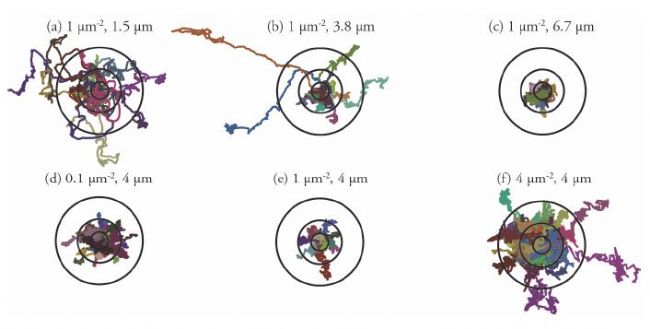Application of laser holographic cell imaging system HoloMonitor M4 in nanomaterials
Nanotechnology was first proposed by Richard P. Feynman in 1959. Nowadays, nanotechnology is widely used in daily life, such as Samsung and Apple's latest mobile phones, with a chip size of 28nm. In the 1960s, a method of semiconductor nanowire growth was discovered. Semiconductor nanowires are typically 1-10 μm long and have a diameter below 100 nm.
In recent years, scientists have begun to notice the biological applications of nanoarrays, such as electrodes, biosensors, cell injections, and application to disease-resistant bacteria, which have placed new demands on understanding the relationship between nanowires and cells. This article explores the interaction between cells and nanowires, how nanowires affect cells. We studied the effect of nanowire size on cell behavior. Studies have found that increasing the length of nanowires can reduce cell migration and interfere with cell division. The binding of cells to the 50 nm line inhibits cell migration. The increase in nanowire density has little effect on cell migration and division. When the density of nanowires exceeds 2000 nm/cell, the cells still bind to the top of the nanowire, but there is cell migration. It is hypothesized that controlling the size of the nanowires can control the extent of cell migration and proliferation. Our results can be further used to limit the side effects of nanowires in cell biology. One of the benefits of the nanosystems used in this study is that the band gap energy of GaP is large, so that light with a wavelength above 549 nm can be transmitted. Most other semiconductor substrates have low bandgap energy and are not transparent to light.
Laser Holographic Cell Imaging System The HoloMonitor M4 has a unique advantage in real-time tracking of cell trajectories, single-cell tracking, and the ability to draw motion trajectories in real time. HoloMonitor M4 uses a laser with a wavelength of 633 nm as a light source. The substrate has polished crystal faces on both sides and can be used to image cells through the GaP matrix.
result
When the cells were cultured in different lengths (1.5 μm, 4 μm, and 6.7 μm) of nanowires (80 nm in diameter and 1 μm in density), the cells exhibited a length-dependent migration pattern (Fig. 2 a, b, c). ), when moving on a 1.5 μm long nanotube, the cells move very quickly. When cells are cultured on substrates of different nanotube densities, cell movement is limited when the density of the nanotubes is 50-100 nanotubes/cell.

Mouse fibroblast L929 cells were cultured on nanotubes. Figure 3 shows that long (6.7 μm) or dense (4 μm-2) nanotubes significantly reduce cell proliferation rates, while short (80 nm in diameter, Nanotubes with a length of 1.5-3.8 μm, a density of 1 μm-2) or a small density (80 nm in diameter, 3.8 μm in length, and a density of 0.1-1 μm-2) have a small effect on cell proliferation compared with the control group.

Emulsions are one of the most commonly used formulations in cosmetics, ranging from thin fluids to thick creams. Therefore, the selection of emulsifier for emulsion cosmetics is of great significance to the research, production, preservation and use of cosmetics.
The function of emulsifier in skin care products is really too important. Without emulsifier, most formulas cannot exist, and many active ingredients cannot be added to the formula.
In skin care products, emulsifier has two main functions: emulsifying and dispersing oil and active ingredients in the formula, providing special skin sensation and rheological characteristics.
Luxury skin care products usually take Xanthan Gum, AGAR powder, gelatin, carrageenan or glycerin monostearate as the Emulsifying Agent.
Our company provides high quality and purity natural Emulsifying agents, which includes Xanthan Gum, AGAR powder, gelatin, carrageenan and glycerin monostearate etc. A custom formula is also available if you would like to have your unique solution.
Emulsifying Agent,Oil-In-Water Emulsifier,Food Emulsifying Agent,Emulsifier Oil Additive Agent
Allied Extracts Solutions , https://www.alliedbiosolutions.com